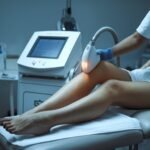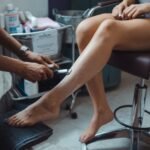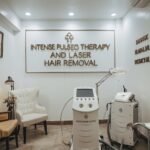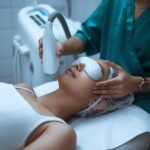How Does PRF Treatment for Hair Help in Hair Loss and Restoration?
- Home
- Hair Re-Growth
- prf treatment for hair
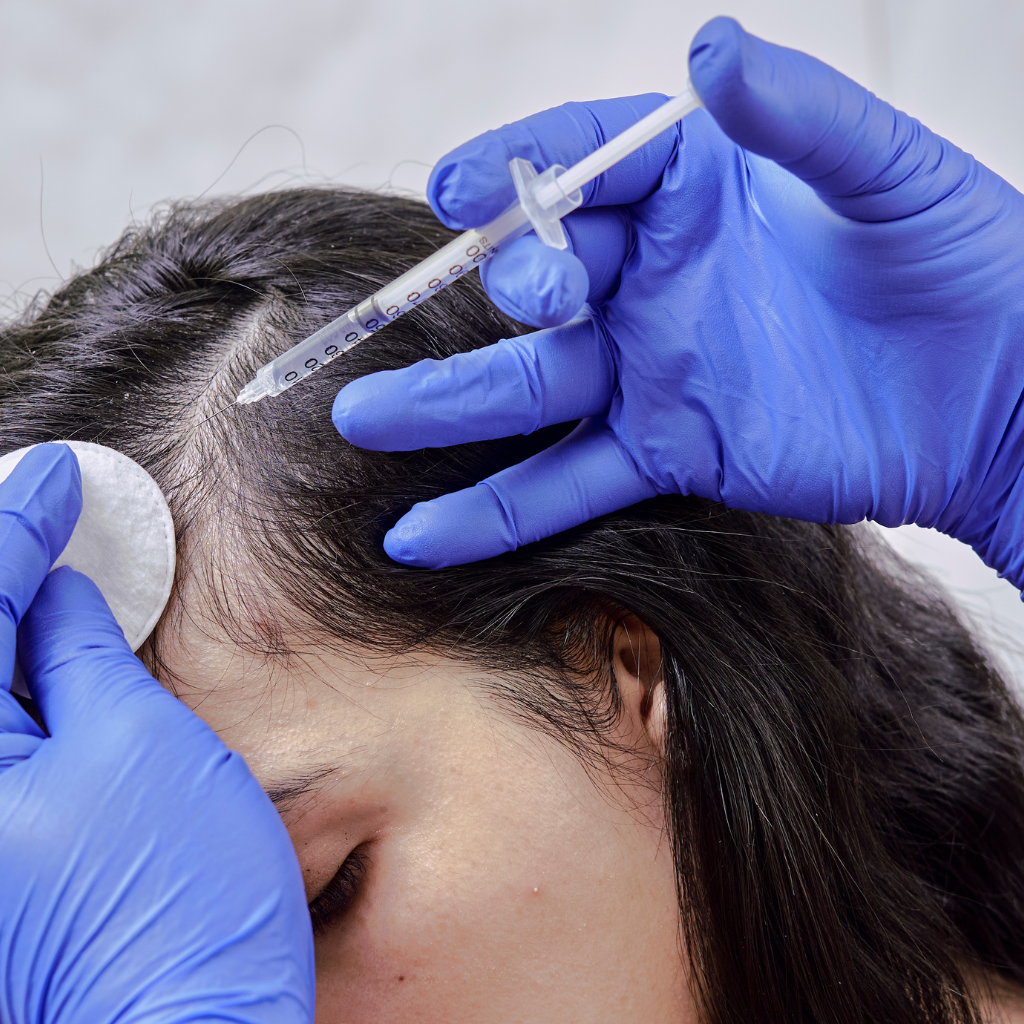
Platelet-rich fibrin (PRF) treatment addresses hair loss by utilising a fibrin matrix to sustain the release of autologous growth factors, fostering hair follicle stimulation and regeneration. With an absence of anticoagulants, PRF offers higher growth factor concentrations compared to platelet-rich plasma. Clinical studies highlight improved hair density and follicular regeneration capabilities. As a non-surgical, low-risk intervention, PRF presents a promising alternative for hair restoration, and further exploration of its benefits and implementation is available.
Key Takeaways
- PRF treatment enhances hair restoration by providing a high concentration of growth factors for follicle stimulation.
- The fibrin matrix in PRF ensures prolonged release of growth factors for sustained follicular activity.
- PRF’s autologous nature minimises adverse reactions, enhancing safety and efficacy in hair regrowth.
- Clinical studies show significant improvements in hair density and vascularisation with PRF treatment.
- PRF therapy promotes cellular proliferation and angiogenesis, improving nutrient supply to hair follicles.
What Is PRF Hair Treatment and How Does It Help Hair Loss?
Platelet-rich fibrin (PRF) is distinguished from platelet-rich plasma (PRP) by its higher concentration of growth factors and absence of anticoagulants, which may enhance its regenerative capabilities in hair loss treatment.
The fibrin matrix in PRF acts as a scaffold that sustains the release of growth factors over a prolonged period, potentially increasing the efficacy of hair follicle stimulation.
Clinical studies suggest that PRF hair restoration is an effective therapy due to its ability to promote vascularisation and improve hair density through natural healing processes.
How Is PRF Different from PRP in Hair Loss Treatment Options?
How exactly does PRF differ from PRP when evaluating options for hair loss treatment? The primary distinction lies in the concentration of growth factors and the method of preparation. PRF for hair growth involves a fibrin matrix that allows for a sustained release of growth factors, which can effectively stimulate hair growth more efficiently than PRP. PRF injections do not require anticoagulants, resulting in a higher concentration of growth factors, essential for hair regrowth.
| Aspect | PRF | PRP |
|---|---|---|
| Preparation | No anticoagulant | Anticoagulant used |
| Growth Factors | Higher concentration | Lower concentration |
| Release Dynamics | Sustained release | Rapid release |
Clinically, PRF treatment has demonstrated superior efficacy in hair restoration, making it a preferable choice when considering PRP vs PRF for hair.
Why Is PRF Hair Restoration Considered an Effective Therapy?
Why does PRF hair restoration stand as a formidable therapy for combating hair loss? This non-surgical treatment leverages autologous growth factors in the PRF to stimulate hair follicles and promote hair regrowth.
Here are the key reasons why PRF for hair is effective:
- High Concentration of Growth Factors: PRF contains a denser concentration of platelets than PRP, enhancing its efficacy in hair restoration treatments.
- Sustained Release: The fibrin matrix in PRF enables a gradual release of growth factors, ensuring prolonged stimulation of hair follicles.
- Biocompatibility: Being autologous, PRF minimises the risk of adverse reactions, making it a safe hair loss treatment.
- Clinical Outcomes: Studies indicate significant improvements in hair growth and density, validating PRF hair restoration as an effective therapeutic option.
How Does PRF Compare with PRP and Other Hair Loss Treatments?
Platelet-rich fibrin (PRF) offers distinct advantages over platelet-rich plasma (PRP) for hair regrowth, as it releases growth factors more gradually, potentially enhancing the regenerative process.
Clinical studies suggest that PRF may provide more sustained hair restoration results compared to traditional treatments due to its fibrin matrix, which supports prolonged healing. The choice of type of platelet rich fibrin treatment, such as i-PRF (injectable PRF), can influence the effectiveness of the procedure, especially in targeting scalp areas for hair regeneration.
However, its efficacy in addressing severe hair loss requires further investigation to establish definitive long-term benefits.
What Makes PRF Hair Loss Treatment Better Than PRP for Regrowth?
While both Platelet-rich Plasma (PRP) and Platelet-rich Fibrin (PRF) are utilised in the management of hair loss, PRF is emerging as a preferred option due to its enhanced regenerative capabilities.
Clinical studies indicate that PRF for hair offers superior hair restoration outcomes. The effectiveness of PRF is attributed to its higher concentration of growth factors, which promote hair growth more effectively.
Key differentiators include:
- Growth Factor Concentration: PRF contains a higher concentration of growth factors compared to PRP.
- Release Duration: PRF allows a sustained release of growth factors, enhancing hair restoration.
- Fibrin Matrix: The presence of a fibrin matrix in PRF aids in better structural support for hair growth.
- Reduced Anticoagulants: PRF hair treatment utilises fewer anticoagulants, ensuring a more natural healing process.
How Effective Is PRF for Hair Restoration in Long-Term Results?
The preference for PRF over PRP due to its enhanced regenerative properties raises important considerations regarding its long-term efficacy in hair restoration.
PRF for hair is increasingly recognised for its potential to improve hair growth and density. Clinical studies suggest that PRF treatment for hair loss offers sustained benefits, particularly in maintaining hair density and addressing hair thinning.
Unlike PRP, PRF contains a higher concentration of growth factors and fibrin matrix, which may contribute to more robust hair restoration outcomes. Evidence indicates that PRF helps in achieving long-term results by supporting follicle viability and proliferation.
Patients undergoing PRF hair loss treatment often report more significant improvements in hair thickness and quality, suggesting that PRF offers a promising solution for enduring hair restoration.
Can PRF Hair Restoration Treatment Help with Severe Hair Loss?
To what extent can PRF hair restoration treatment address severe hair loss?
PRF for hair has demonstrated potential in stimulating hair regrowth, particularly in cases where dormant hair follicles are present. Its efficacy, compared to other treatments like PRP, hinges on the higher concentration of growth factors that stimulate the hair.
Clinical evidence suggests that PRF treatment for hair can improve hair quality and restore hair health. However, the extent of its effectiveness in severe hair loss cases requires careful consideration of individual patient variables.
- Growth Factors: PRF has elevated concentrations that may enhance follicular activity.
- Dormant Follicles: It may reactivate follicles that have ceased functioning.
- Hair Quality: Significant improvements in texture and strength are reported.
- Comparative Analysis: PRF surpasses PRP in growth factor density.
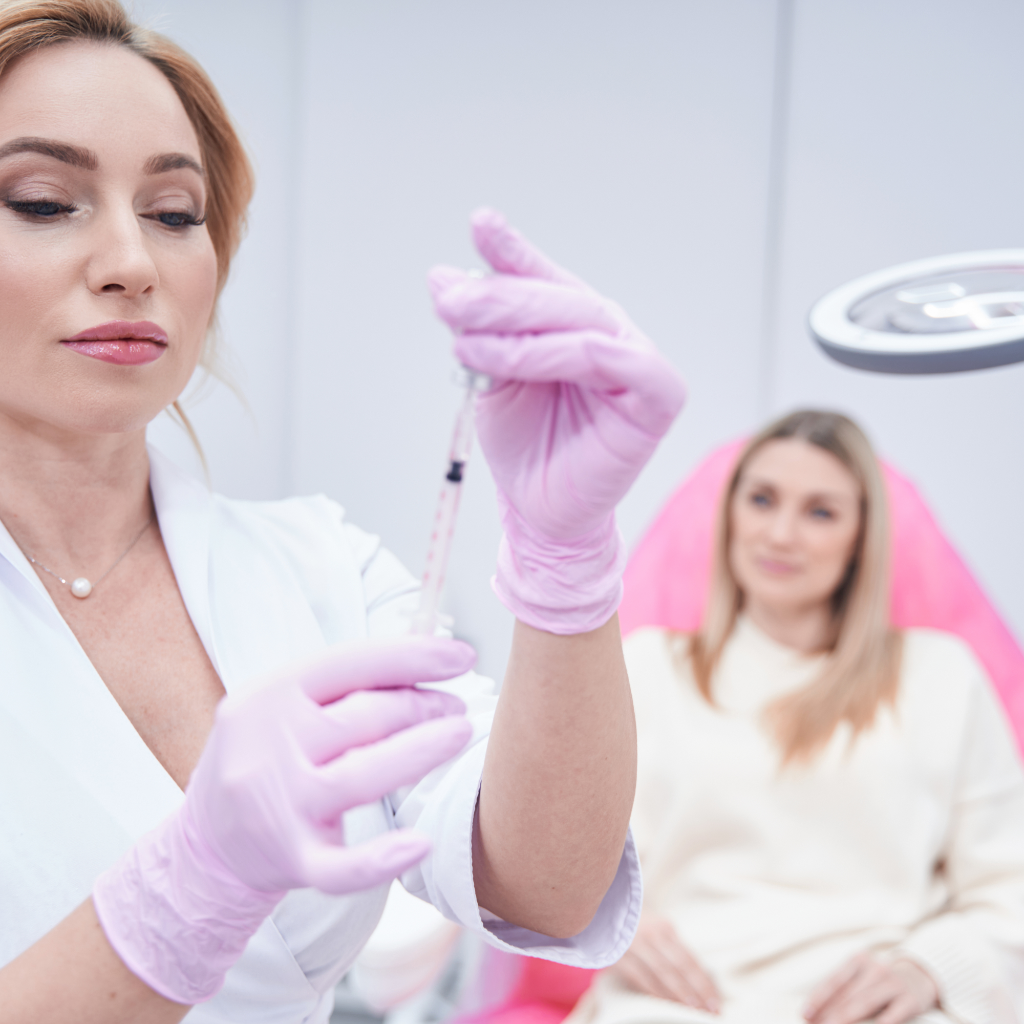
What Are the Benefits and Effects of PRF Hair Restoration?
PRF hair restoration offers several advantages, including enhanced hair density and minimal risk of adverse reactions due to its autologous nature.
The therapy promotes natural hair regrowth by releasing growth factors that target hair follicle stem cells, thereby stimulating follicular proliferation and differentiation.
Key effects observed in clinical settings include increased anagen phase duration and improved hair follicle health, contributing to an overall improvement in hair quality.
What Are the Main Advantages of PRF Hair Treatment for Baldness?
How does PRF hair treatment stand out as a solution for baldness? PRF for hair is gaining attention in clinical settings due to its potential benefits in hair restoration. This innovative hair treatment leverages growth factors to combat hair loss and stimulate hair regrowth.
Its advantages include:
- Natural Hair Regrowth: PRF promotes hair by utilising the body’s regenerative properties, leading to thicker hair.
- Improved Hair Density: Clinical studies indicate a significant improvement in hair density, offering a fuller appearance.
- Minimal Side Effects: Unlike traditional methods, PRF hair loss interventions are associated with a lower risk of adverse effects.
- Non-Invasive Procedure: As a minimally invasive option, it provides an effective alternative to surgical interventions for hair restoration.
These factors position PRF as a promising option for those seeking hair restoration.
How Does PRF Therapy Stimulate Hair Regrowth Naturally?
Building on the advantages of PRF hair treatment for baldness, an understanding of its mechanism in stimulating hair regrowth naturally becomes increasingly relevant.
PRF therapy, a treatment option for individuals experiencing mild to moderate hair thinning or loss, relies on the natural healing properties of platelet-rich fibrin. PRF contains a high concentration of growth factors, which are essential in stimulating hair follicles and promoting the restoration of hair naturally.
In some protocols, stem cells for the treatment of hair loss are also considered alongside PRF to further enhance regenerative potential, especially in more advanced hair loss cases.
These growth factors foster an environment conducive to long-term hair restoration and natural hair growth. Clinical studies suggest that PRF therapy greatly improves hair density and thickness, contributing to overall hair improvement.
When comparing PRP and PRF hair loss treatments, PRF is often favoured due to its higher concentration of growth factors and absence of additives, offering a more natural and effective approach.
What Are the Key Effects of PRF on Hair Follicle Stimulation?
Intriguingly, what distinguishes PRF therapy in hair restoration is its ability to directly influence hair follicle stimulation through the release of concentrated growth factors.
PRF for hair leverages autologous platelet-rich fibrin to deliver a potent mix of growth factors and cytokines. These components are injected around the hair follicle, enhancing its regenerative environment.
The effects of PRF are multifaceted, encompassing:
- Stimulation of stem cells: Factors stimulate the hair follicles, promoting cellular proliferation and differentiation.
- Induction of angiogenesis: PRF for hair restoration enhances blood vessel formation, improving nutrient supply to hair follicles.
- Inhibition of apoptosis: PRF reduces programmed cell death, preserving existing hair follicles.
- Promotion of new hair growth: This therapy leads to increased hair density and thickness, offering a promising solution for hair loss.
Who Is PRF Hair Loss Treatment Suitable For and How Does It Work?
Platelet-rich fibrin (PRF) treatment is suitable for individuals experiencing early stages of hair loss, including pattern hair loss such as androgenetic alopecia, as it utilises the patient’s blood components to enhance hair regrowth potentially.
The process involves collecting a blood sample, centrifuging it to separate the PRF, and then injecting it into the scalp to stimulate hair follicles, where the growth factors stimulate the hair at the root level, promoting healthier and stronger hair over time.
PRF can be particularly effective when early signs of hair thinning are present, helping to delay or reverse progression. In some cases, combining PRF with other therapies can enhance results, especially in individuals affected by the hormone responsible for hair loss, such as dihydrotestosterone (DHT).
Typically, multiple sessions are required, often spaced several weeks apart, to observe significant improvements in hair density and thickness.
What Is Involved in the Process of PRF Treatment for Hair Loss?
The process of PRF treatment for hair loss involves several key steps that leverage the regenerative potential of platelet-rich fibrin to stimulate hair growth.
PRF for hair, a natural treatment, distinguishes itself from PRP by utilising a higher concentration of growth factors due to the absence of anticoagulants. This key differentiation enhances hair restoration methods.
The treatment process is meticulously planned to maximise efficacy in treating hair loss and improving hair density.
- Blood Collection: A small blood sample is drawn from the patient.
- Centrifugation: The sample is spun to separate PRF, optimising PRF concentration.
- Preparation: The PRF is carefully extracted and prepared for use.
- Injection: The PRF is injected into the scalp, targeting areas needing hair growth and improvement.
This structured treatment plan showcases the clinical precision of PRF therapy.
How Many PRF Hair Restoration Treatments Are Usually Needed?
Following the procedural steps of PRF treatment for hair loss, the frequency and suitability of these treatments become pertinent considerations.
Typically, individuals with moderate hair thinning may require three to four sessions of PRF for hair, spaced four to six weeks apart, to achieve ideal results of PRF.
This treatment for hair is often combined with hair restoration surgery to enhance hair regeneration.
PRF has a higher concentration of platelets, which promotes the healing and growth factors needed in the treatment area.
The treatment that uses this approach is especially beneficial in early-stage hair thinning, where the hair follicles can still respond favorably.
Subsequent maintenance sessions may be recommended every six to 12 months to sustain the achieved benefits.

What Results and Aftercare Can You Expect from PRF Hair Therapy?
Patients undergoing PRF hair therapy may observe initial signs of hair regrowth within three to six months post-treatment, although individual results can vary considerably. This is largely due to the growth factors present in PRF, which play a key role in promoting natural hair growth by stimulating dormant follicles.
The procedure is generally well-tolerated, with minimal side effects, such as mild swelling or discomfort at the injection site. PRF is often chosen as a non-surgical alternative or complementary treatment to hair transplant surgery, as it can encourage hair to grow in thinning areas and support transplanted grafts.
Post-treatment, adherence to a maintenance schedule, often involving follow-up sessions, is essential to sustain hair growth and improve hair density and quality over time.
How Soon Can You See Hair Regrowth After PRF Hair Treatment?
How quickly can one expect to see hair regrowth following PRF (Platelet-Rich Fibrin) hair treatment? Evidence suggests that results may vary among individuals.
Generally, initial signs of hair regrowth are observed within 4 to 6 weeks post-treatment. PRF for hair is often compared to PRP, with the former showing potential advantages in promoting hair thickness and healthier hair.
Here are the key expectations:
- Initial Progress: Hair regrowth may commence as early as four weeks, with noticeable changes in hair thickness.
- Comparative Efficacy: PRF vs PRP indicates that PRF might offer superior outcomes in addressing hair loss.
- Sustained Improvements: Continued improvement in hair density is typically seen over several months.
- Maintenance: Regular follow-up treatments may be required to sustain hair regrowth.
Are There Any Side Effects of PRF Hair Loss Treatment to Know?
PRF for hair, a treatment gaining popularity for its efficacy in promoting hair growth and combating hair loss, generally exhibits minimal side effects.
Compared to PRP, PRF treatment involves a higher concentration of growth factors, potentially enhancing hair restoration effects.
However, common side effects may include mild scalp tenderness, temporary swelling, or minor bruising at injection sites, all of which typically resolve within a few days.
No synthetic additives are used, reducing the risk of allergic reactions and making PRF suitable for natural hair restoration.
This method provides a promising alternative for individuals with thinning hair, enhancing healthy hair regrowth without significant complications.
What Maintenance Is Needed After PRF Hair Restoration Therapy?
Following the understanding of potential side effects, attention turns to the maintenance required after undergoing PRF hair restoration therapy. This treatment aims to combat hair loss and stimulate natural hair growth, leading to fuller hair and strengthening existing hair.
Post-procedure maintenance is essential for ideal results:
- Follow-up Sessions: Regular follow-up PRF treatments are advised to maintain hair restoration benefits and combat hair thinning.
- Gentle Hair Care: Use mild shampoos to protect the scalp and reinforce the effects of PRF treatment.
- Nutritional Support: Adequate intake of vitamins and minerals supports natural hair growth and strengthens hair.
- Avoid Heat Styling: Limiting heat exposure minimises damage to newly restored hair, fostering healthier growth.
Adhering to these guidelines maximises the therapeutic potential of PRF for hair.
Conclusion
To summarise, Platelet–rich fibrin PRF hair treatment emerges as a promising option for individuals experiencing hair loss, leveraging the body’s natural healing processes through concentrated growth factors. Clinically, PRF demonstrates potential advantages over traditional PRP and other treatments, offering enhanced hair restoration outcomes. Suitable for a diverse range of patients, PRF therapy is minimally invasive with a favourable safety profile. While individual results may vary, proper aftercare can optimise the therapeutic benefits, positioning PRF as a viable component of extensive hair loss management.

Highly skilled cosmetologist at Tune Clinical Aesthetics, specializing in advanced skin and hair treatments.


